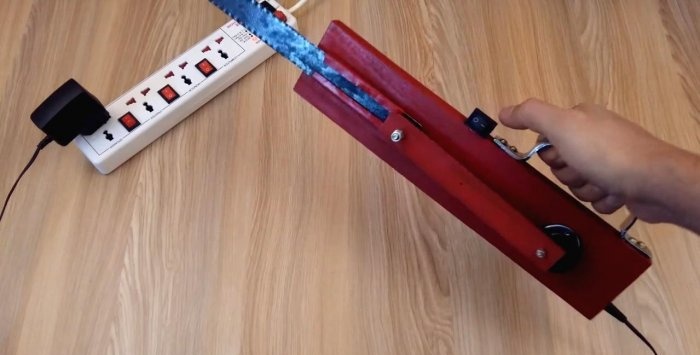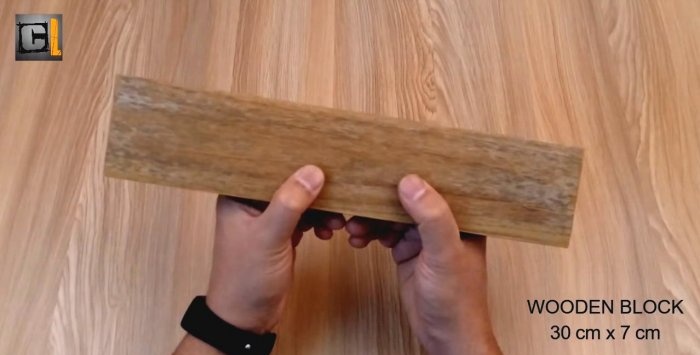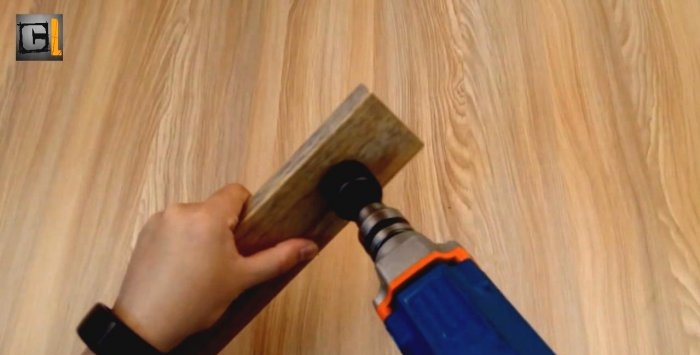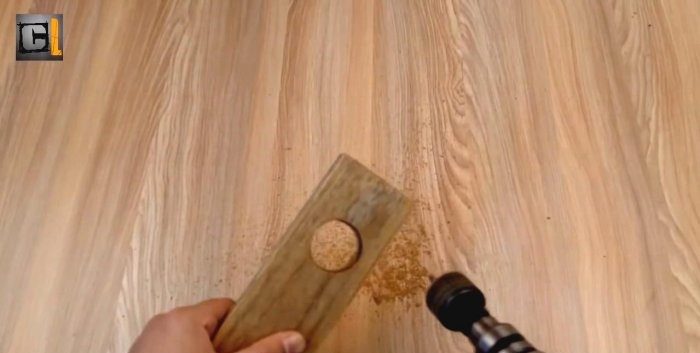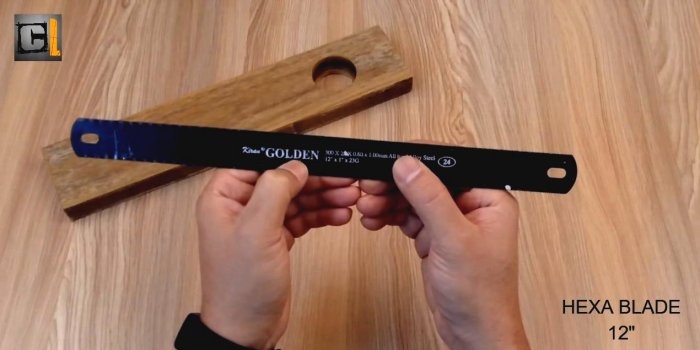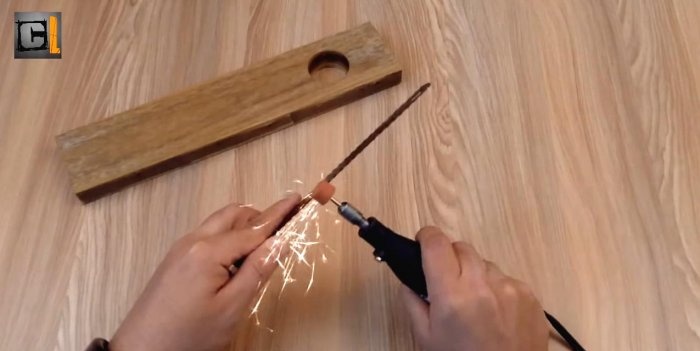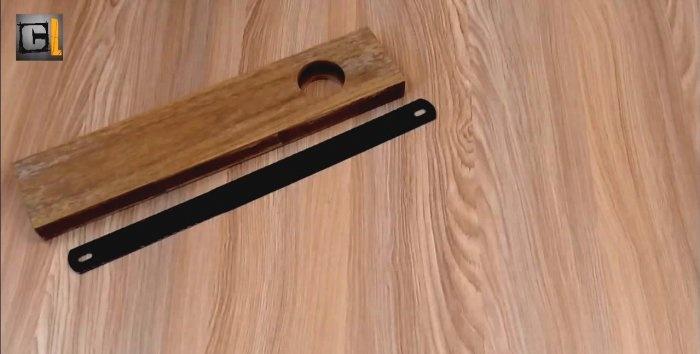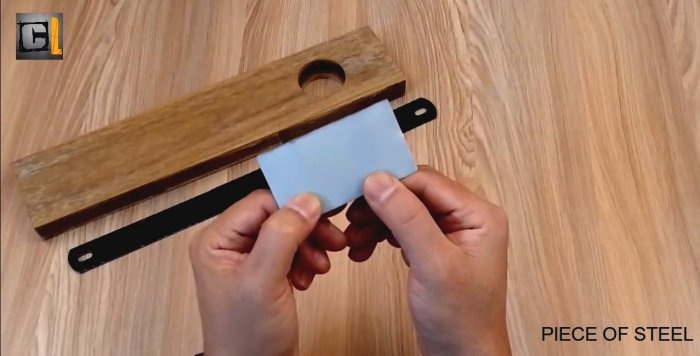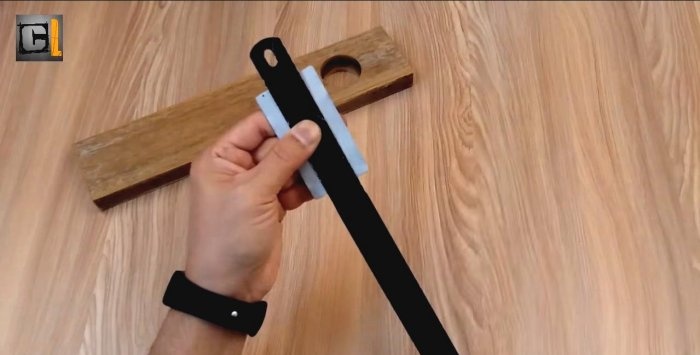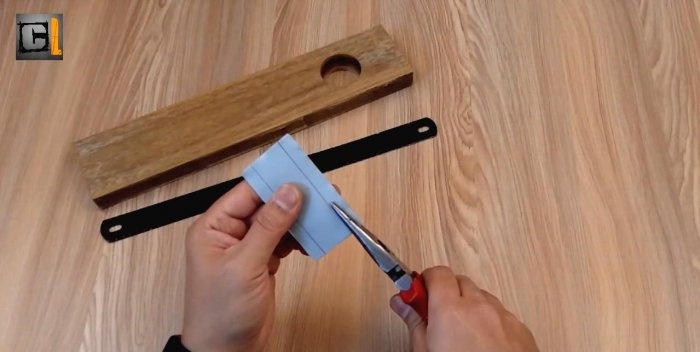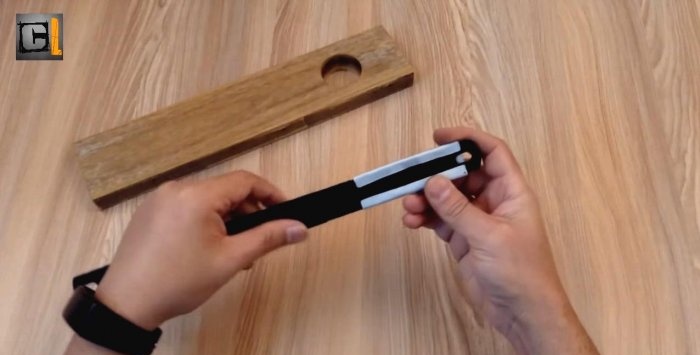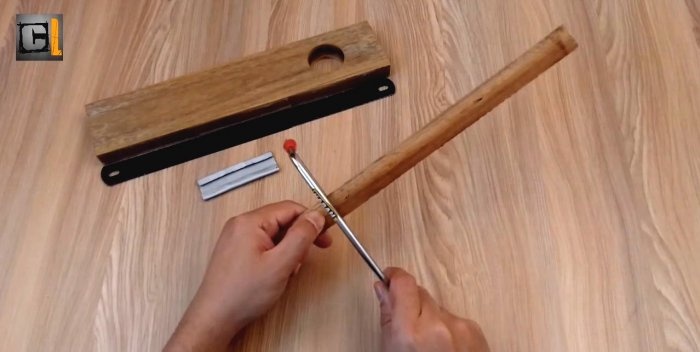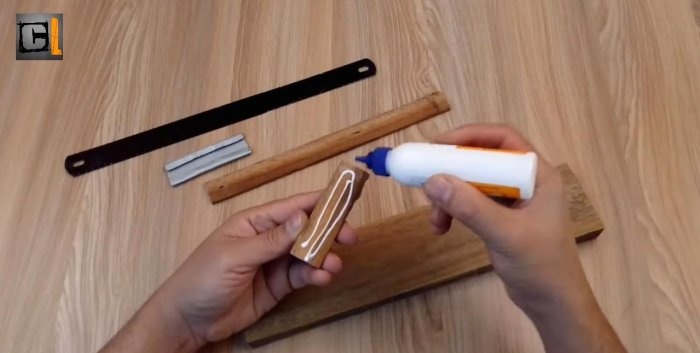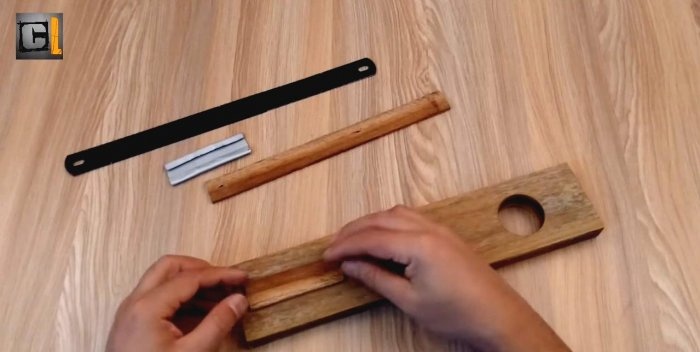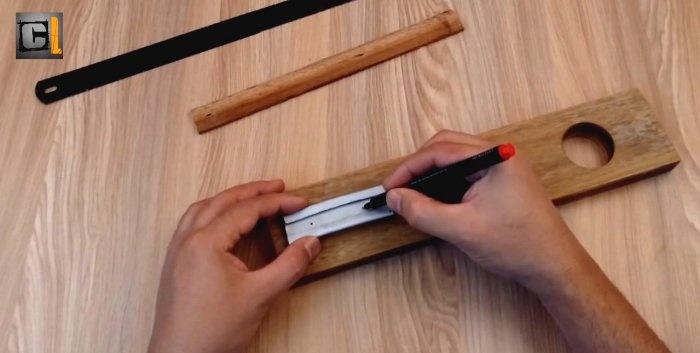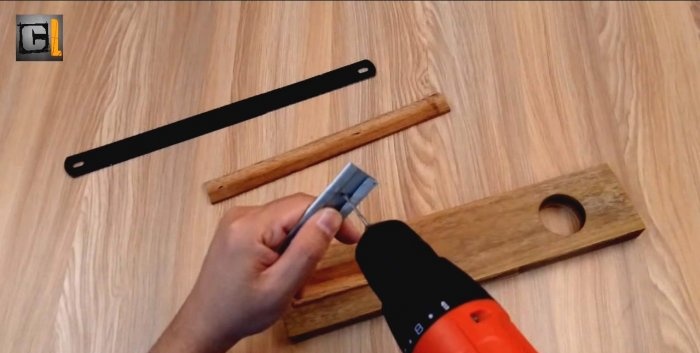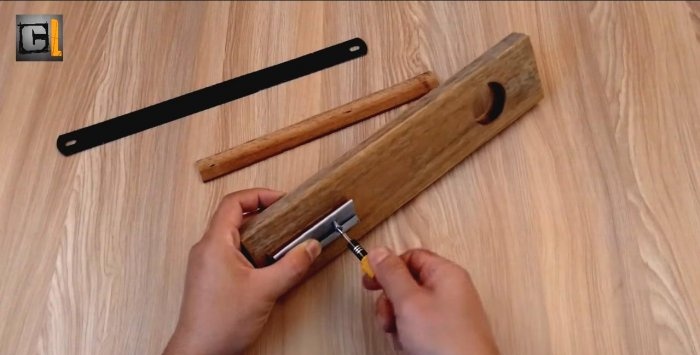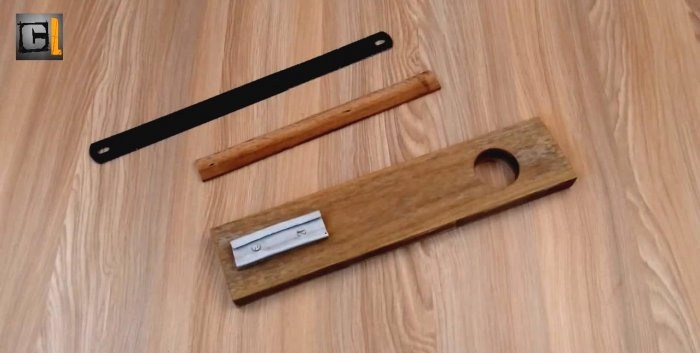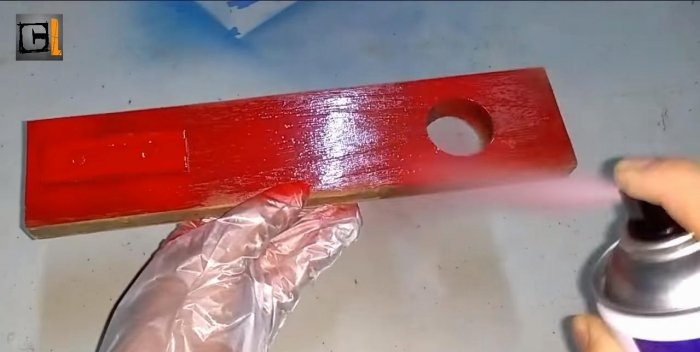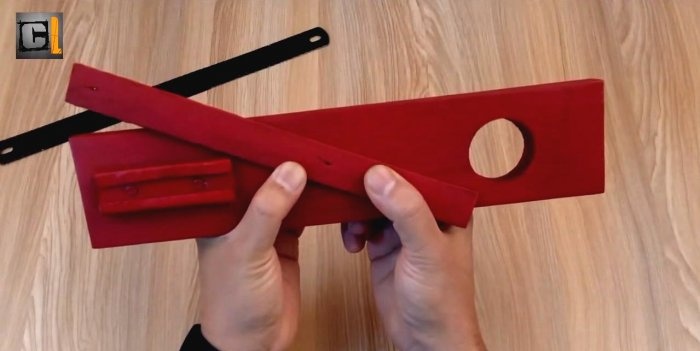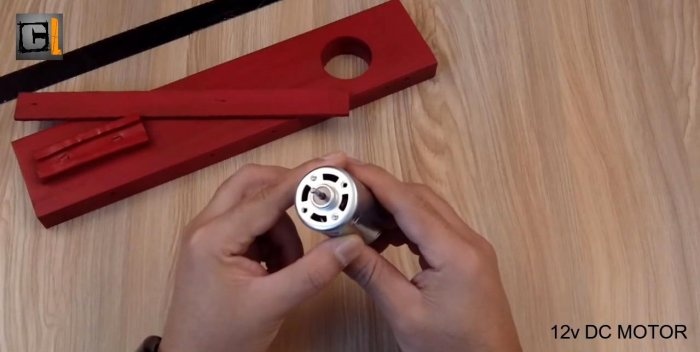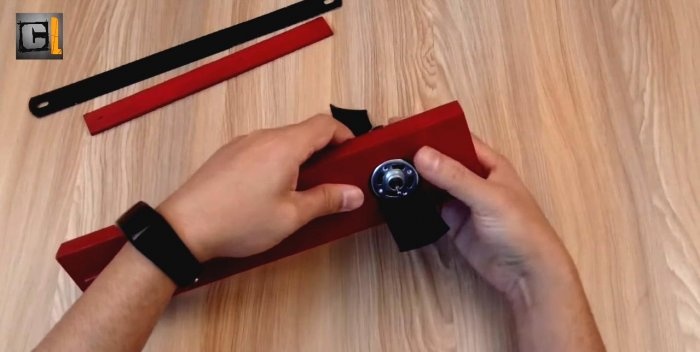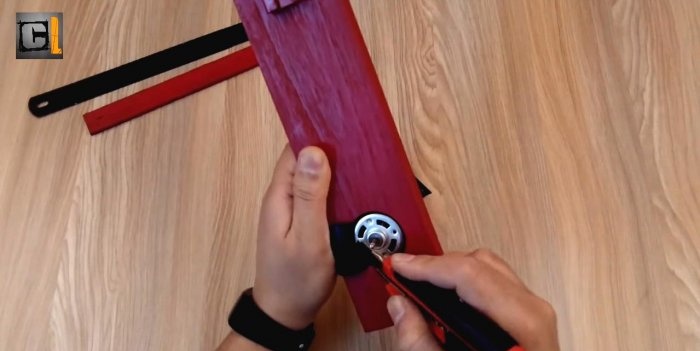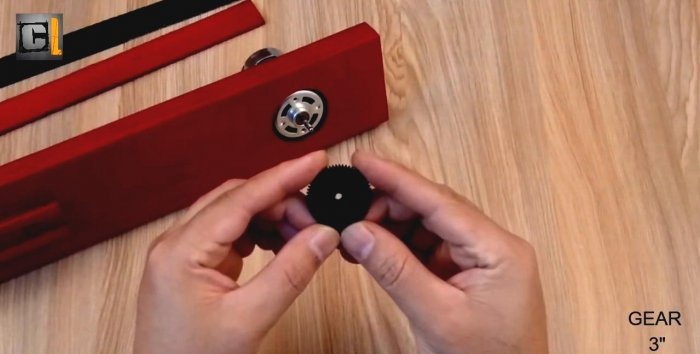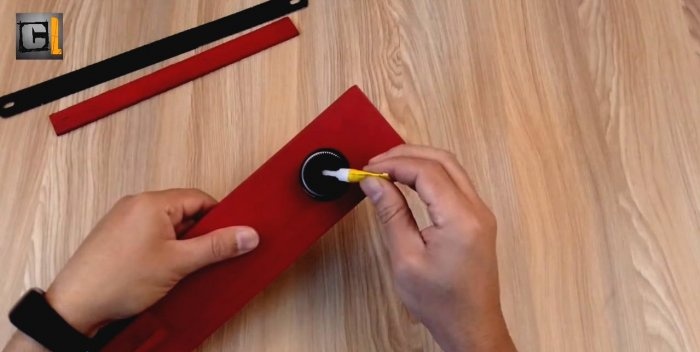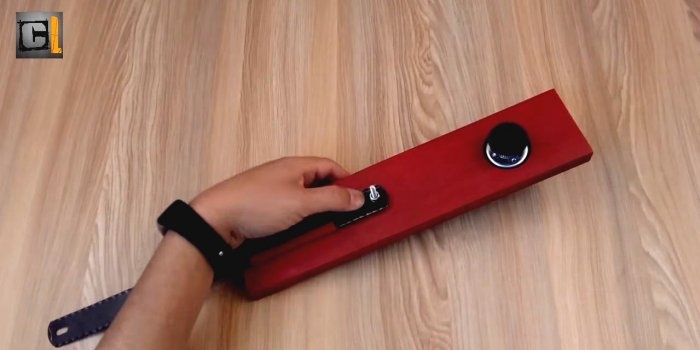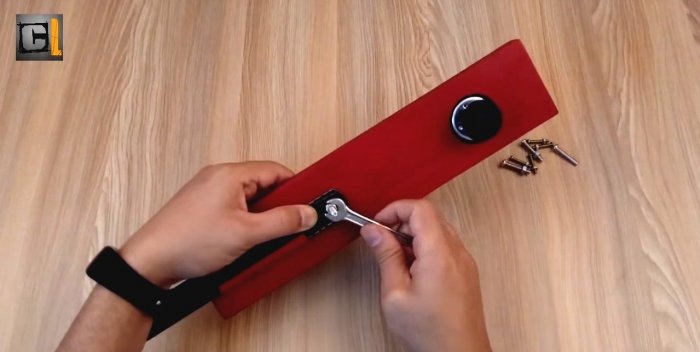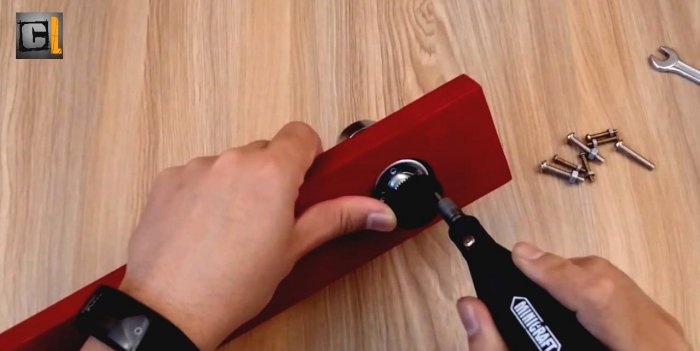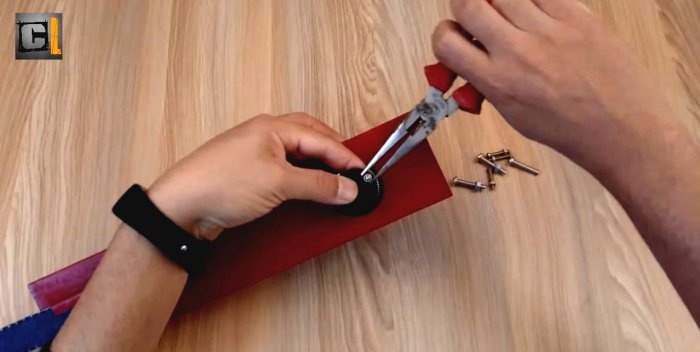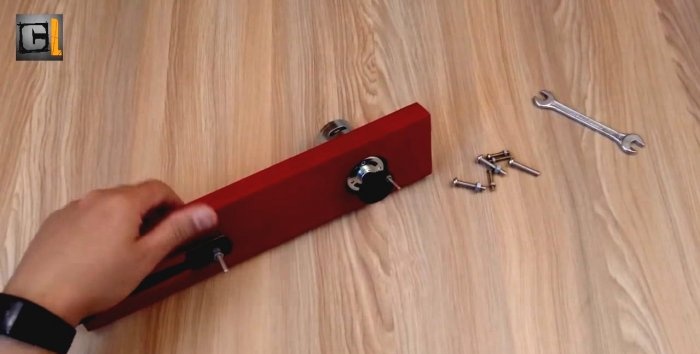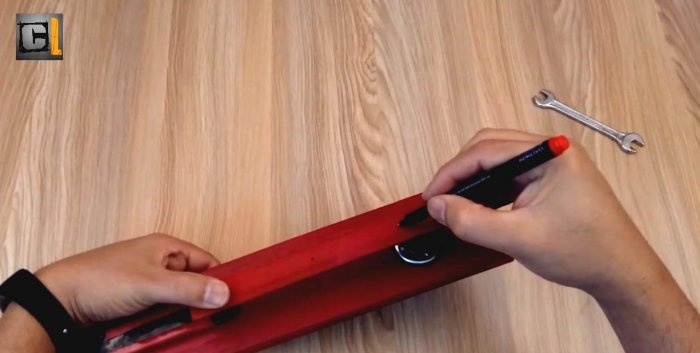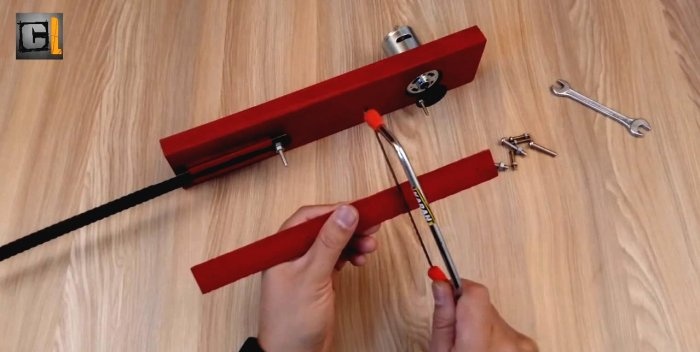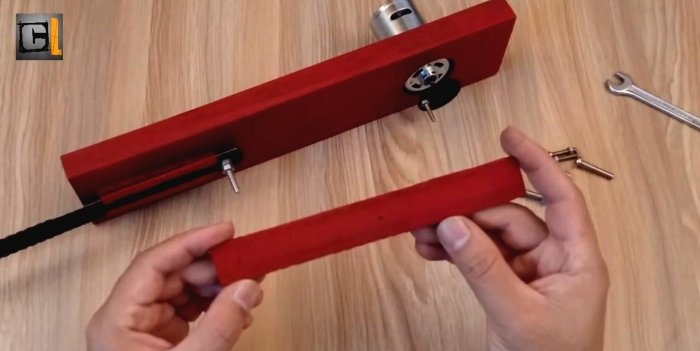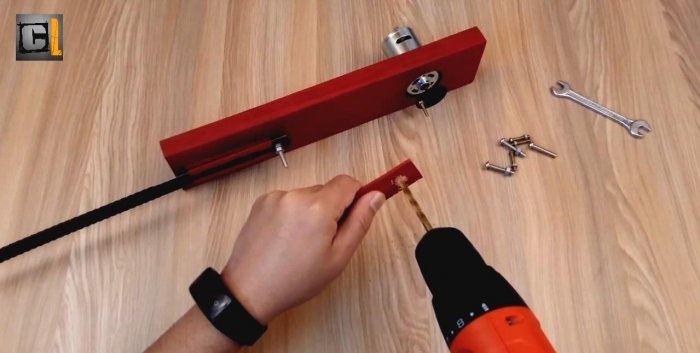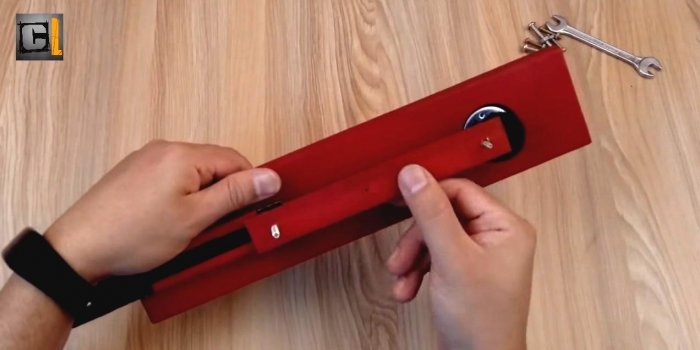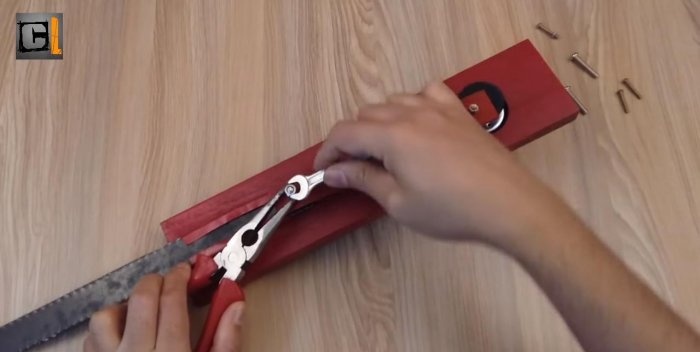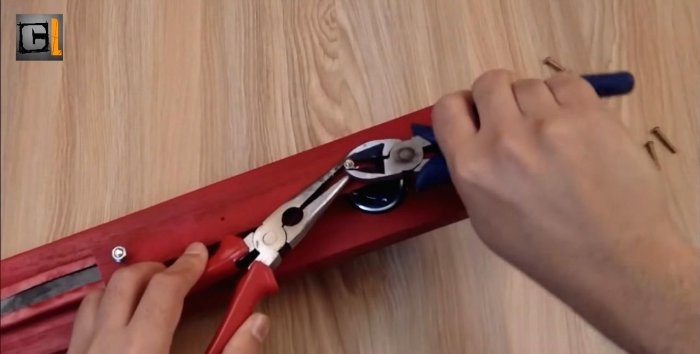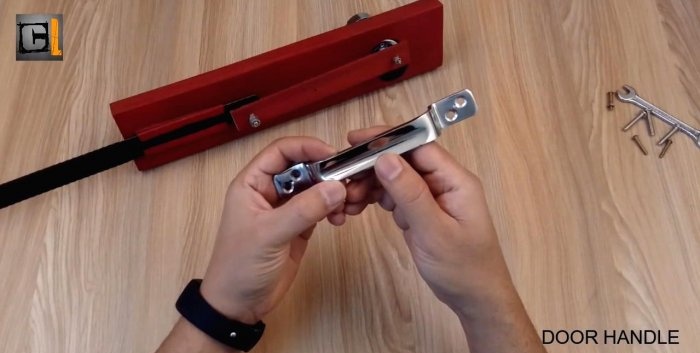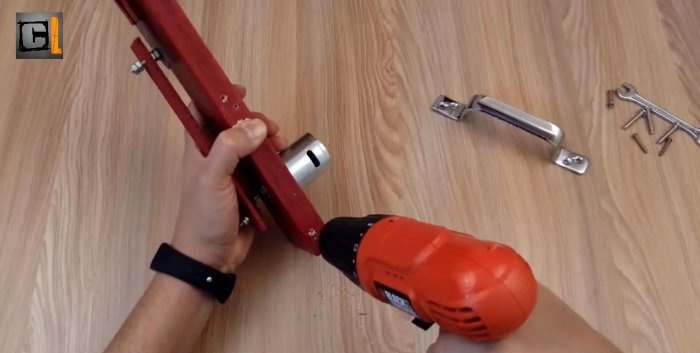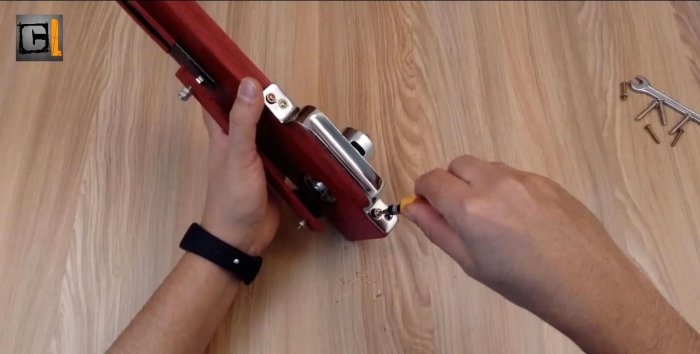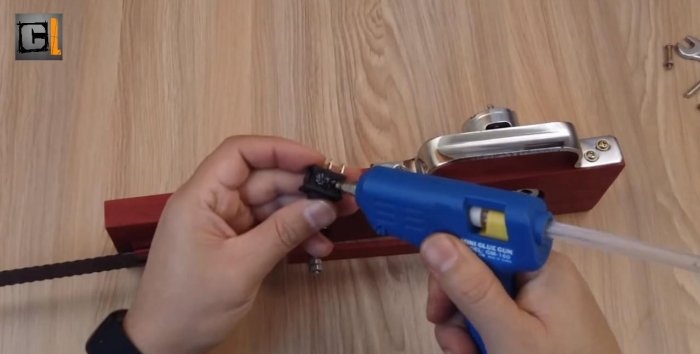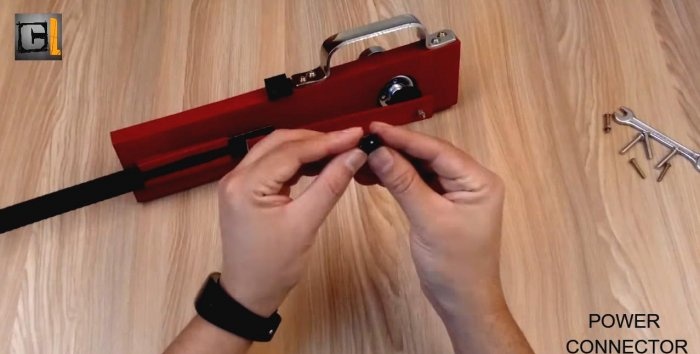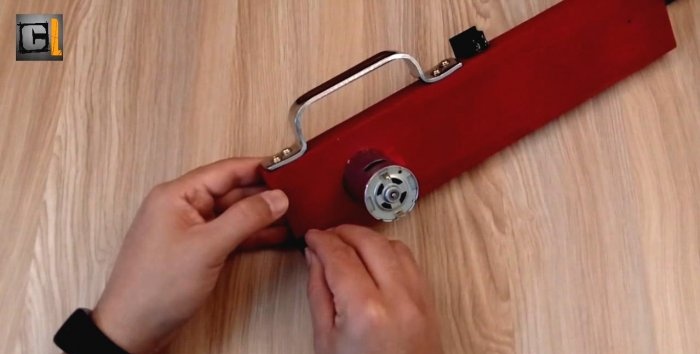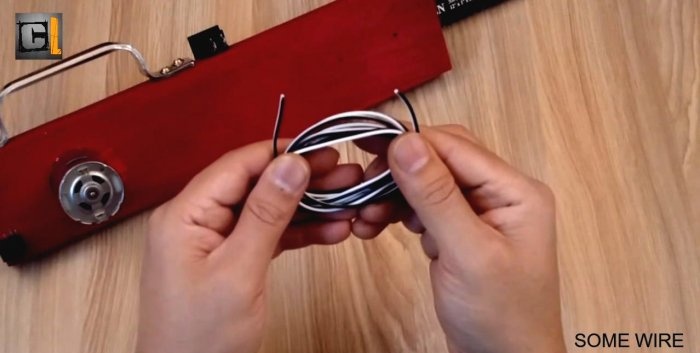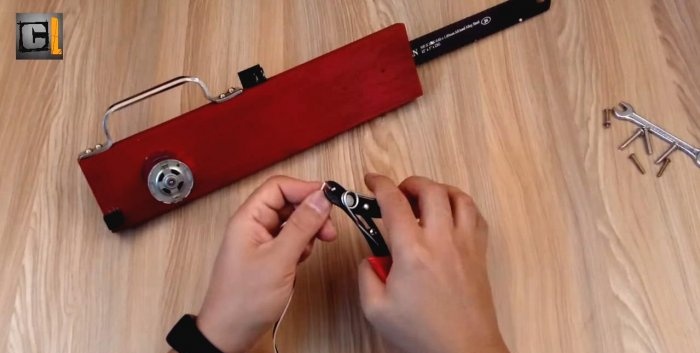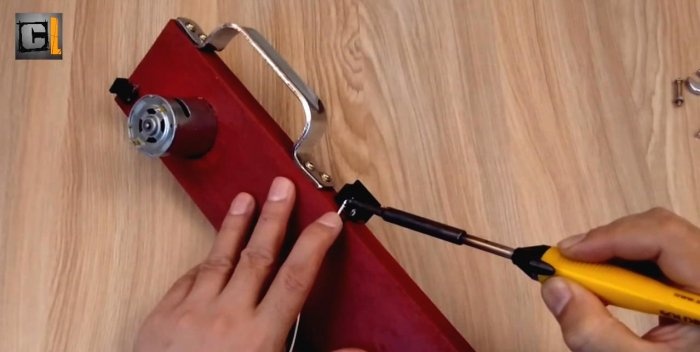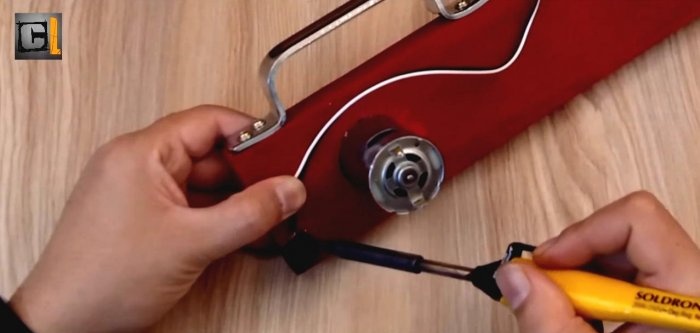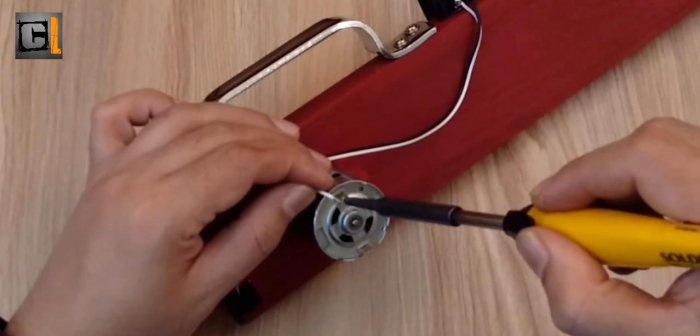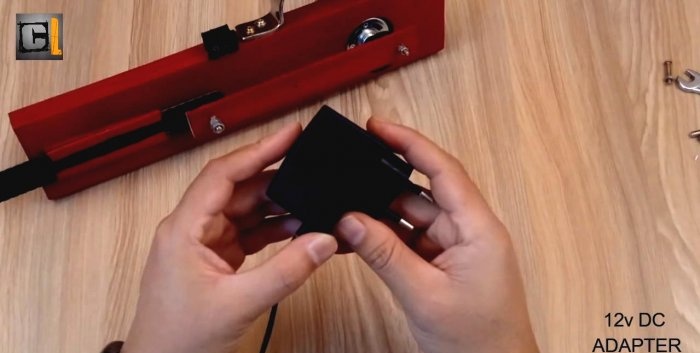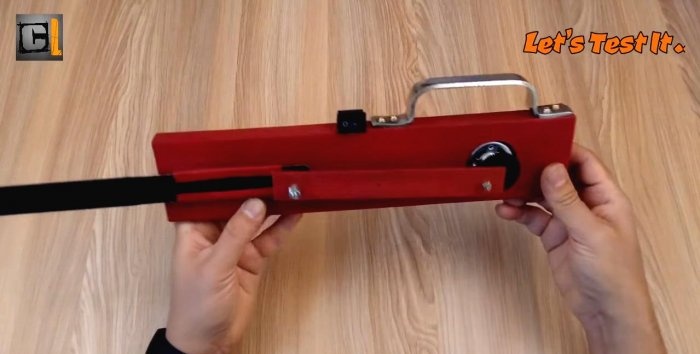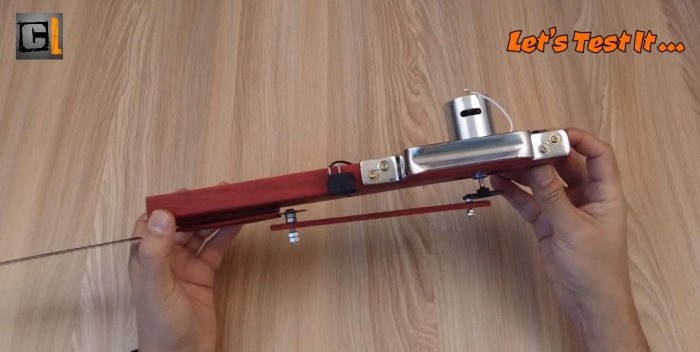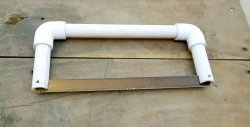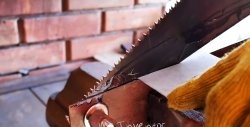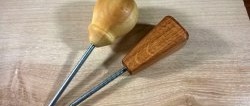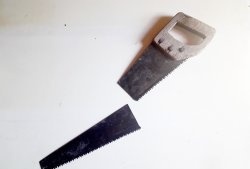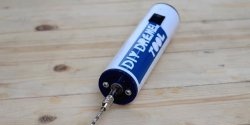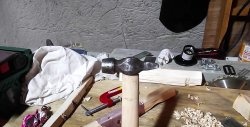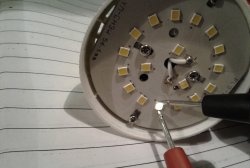How to make a simple hacksaw with a 12 V motor
A hacksaw is one of the most important tools on the farm. You often need to saw off, trim or shorten something, but you don’t always have a hacksaw at hand.
Today's homemade product is a kind of power tool designed for sawing small wooden parts. The base is a wide blade from a hacksaw for metal. Similar ones exist with large teeth for faster sawing.
For work we will need:
Tools:
A wooden block will serve as a handle for our electric hacksaw, so it needs to be prepared. This is not just a piece of raw wood. It is desirable that it be evenly planed, with the same width of edges and planes.
We take a drill and make a hole in it with a hole saw for the engine.
Now we prepare the hacksaw blade. It needs to grind its teeth literally to the middle. This must be done on both sides using a turbine with an abrasive attachment or an electric sandpaper.
Next we work with a piece of steel that needs to be bent like a sheath from the edges. It is in such a “sheath” that the ground part of the hacksaw blade will move. We mark a piece of steel and bend it with pliers.
To prevent the blade from sticking too tightly to the handle, it is necessary to secure it through a gasket. We make it from a thin wooden plank, which we cut to the size of the iron guides for the canvas. We sit this section of the plank on wood glue or PVA.
We attach the guides and place several mounting holes with a marker. You will need to drill them with a drill.
We fasten the guides with two self-tapping screws and cover the handle on all sides with aerosol paint. Don’t forget to also paint the rod made from the rest of the wooden plank.
It's time to mount the engine. The hole for it is made with a reserve, so to keep it firmly, we use a piece of an old bicycle tube as a gasket. We cut off the excess pieces of rubber protruding from both sides with a knife.
For the traction to work, we will need to attach a small plastic gear to the engine shaft. We use superglue for this.
We will install the connection between the gear and the rod with bolts.To do this, we fix the drive bolt at the base of the blade, and tighten it with a nut and a lock nut so that it does not unwind.
We make a hole in the gear with a small drill for the next connecting bolt. We insert it into the gear and also tighten it with nuts.
We mark the rod-bar according to the minimum size between the two bolts, and drill a hole in it for them.
We fasten the rod similarly to the nuts, but so that it moves freely on a pendulum stroke.
We attach a window handle to the upper edge of the handle for ease of use with the tool.
We attach the switch button using hot glue and a gun. We also attach the socket for the adapter.
Using several wires we assemble an electrical circuit: adapter socket-switch-switch. We solder the contacts with a soldering iron.
We connect the adapter to the socket and check the operation of the tool. Now you can saw something off))…
Despite the seeming frivolity of such homemade products, it is worth noting that each of them had a need for the appearance of this tool, and for some reason - financial or some other - was more relevant than a professional tool. In any case, such homemade products are dedicated to everyone who does not like to sit back and dream while work stands still and nothing is done because there is nothing to do. Bye everyone and have a nice day!
Today's homemade product is a kind of power tool designed for sawing small wooden parts. The base is a wide blade from a hacksaw for metal. Similar ones exist with large teeth for faster sawing.
Collecting materials and tools
For work we will need:
- Wooden block 30x7 cm, about 2 cm thick;
- The blade for a hacksaw for metal is wide;
- A small piece of mild steel sheet;
- DC motor for simulation;
- Wooden slats for traction and backing:
- Gear with 3 mm mounting hole;
- Push button switch;
- Adapter connector socket;
- 12V adapter;
- Superglue and wood glue (PVA);
- A piece of an old bicycle tube;
- Several wires, bolts and nuts and one window handle.
Tools:
- Drill with a core drill to match the diameter of the engine housing;
- A turbine or electric sander for grinding down the teeth of the blade;
- Hot glue;
- Soldering iron with solder and flux;
- Spanners;
- Knife, screwdrivers, pliers.
Assembling an electric hacksaw
A wooden block will serve as a handle for our electric hacksaw, so it needs to be prepared. This is not just a piece of raw wood. It is desirable that it be evenly planed, with the same width of edges and planes.
We take a drill and make a hole in it with a hole saw for the engine.
Now we prepare the hacksaw blade. It needs to grind its teeth literally to the middle. This must be done on both sides using a turbine with an abrasive attachment or an electric sandpaper.
Next we work with a piece of steel that needs to be bent like a sheath from the edges. It is in such a “sheath” that the ground part of the hacksaw blade will move. We mark a piece of steel and bend it with pliers.
To prevent the blade from sticking too tightly to the handle, it is necessary to secure it through a gasket. We make it from a thin wooden plank, which we cut to the size of the iron guides for the canvas. We sit this section of the plank on wood glue or PVA.
We attach the guides and place several mounting holes with a marker. You will need to drill them with a drill.
We fasten the guides with two self-tapping screws and cover the handle on all sides with aerosol paint. Don’t forget to also paint the rod made from the rest of the wooden plank.
It's time to mount the engine. The hole for it is made with a reserve, so to keep it firmly, we use a piece of an old bicycle tube as a gasket. We cut off the excess pieces of rubber protruding from both sides with a knife.
For the traction to work, we will need to attach a small plastic gear to the engine shaft. We use superglue for this.
We will install the connection between the gear and the rod with bolts.To do this, we fix the drive bolt at the base of the blade, and tighten it with a nut and a lock nut so that it does not unwind.
We make a hole in the gear with a small drill for the next connecting bolt. We insert it into the gear and also tighten it with nuts.
We mark the rod-bar according to the minimum size between the two bolts, and drill a hole in it for them.
We fasten the rod similarly to the nuts, but so that it moves freely on a pendulum stroke.
We attach a window handle to the upper edge of the handle for ease of use with the tool.
We attach the switch button using hot glue and a gun. We also attach the socket for the adapter.
Using several wires we assemble an electrical circuit: adapter socket-switch-switch. We solder the contacts with a soldering iron.
We connect the adapter to the socket and check the operation of the tool. Now you can saw something off))…
Afterword
Despite the seeming frivolity of such homemade products, it is worth noting that each of them had a need for the appearance of this tool, and for some reason - financial or some other - was more relevant than a professional tool. In any case, such homemade products are dedicated to everyone who does not like to sit back and dream while work stands still and nothing is done because there is nothing to do. Bye everyone and have a nice day!
Watch the video
Similar master classes
Particularly interesting
Comments (2)

